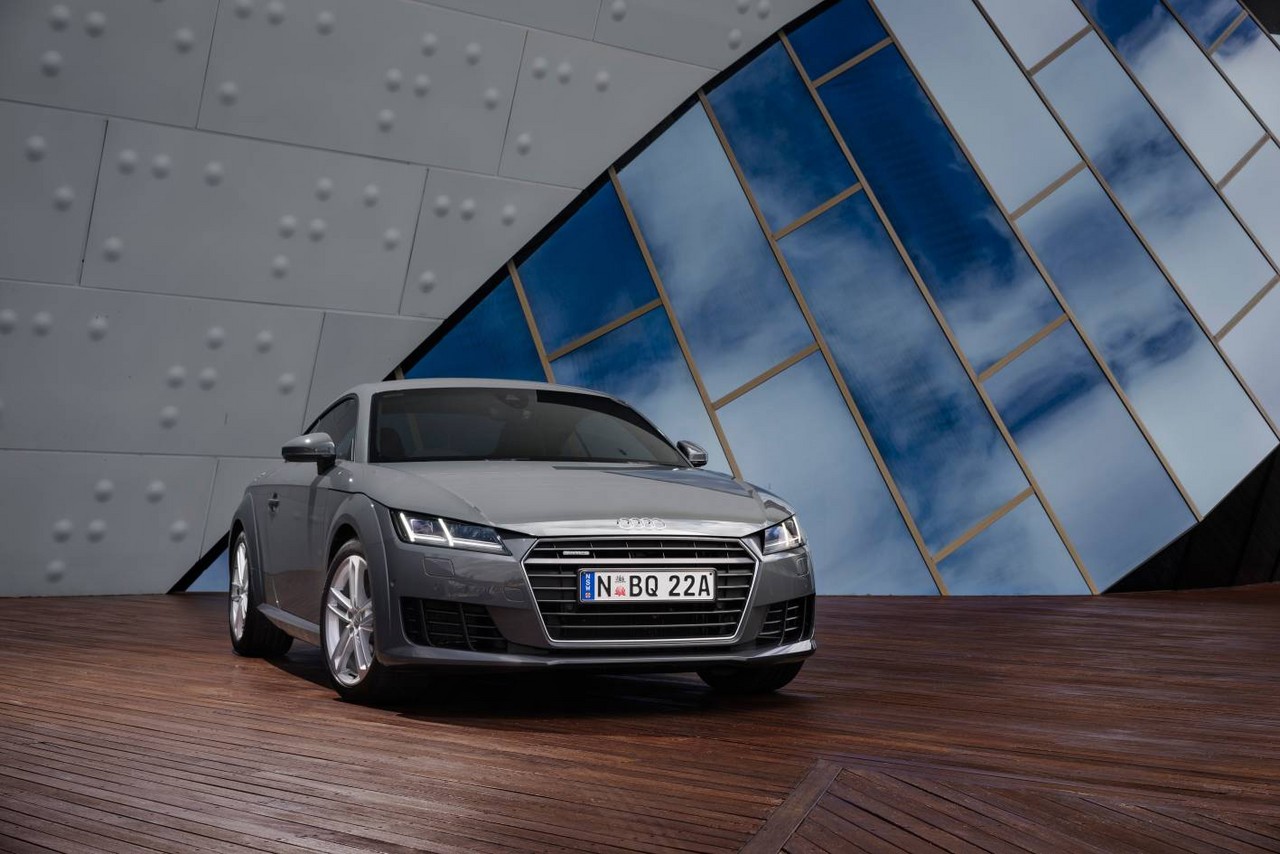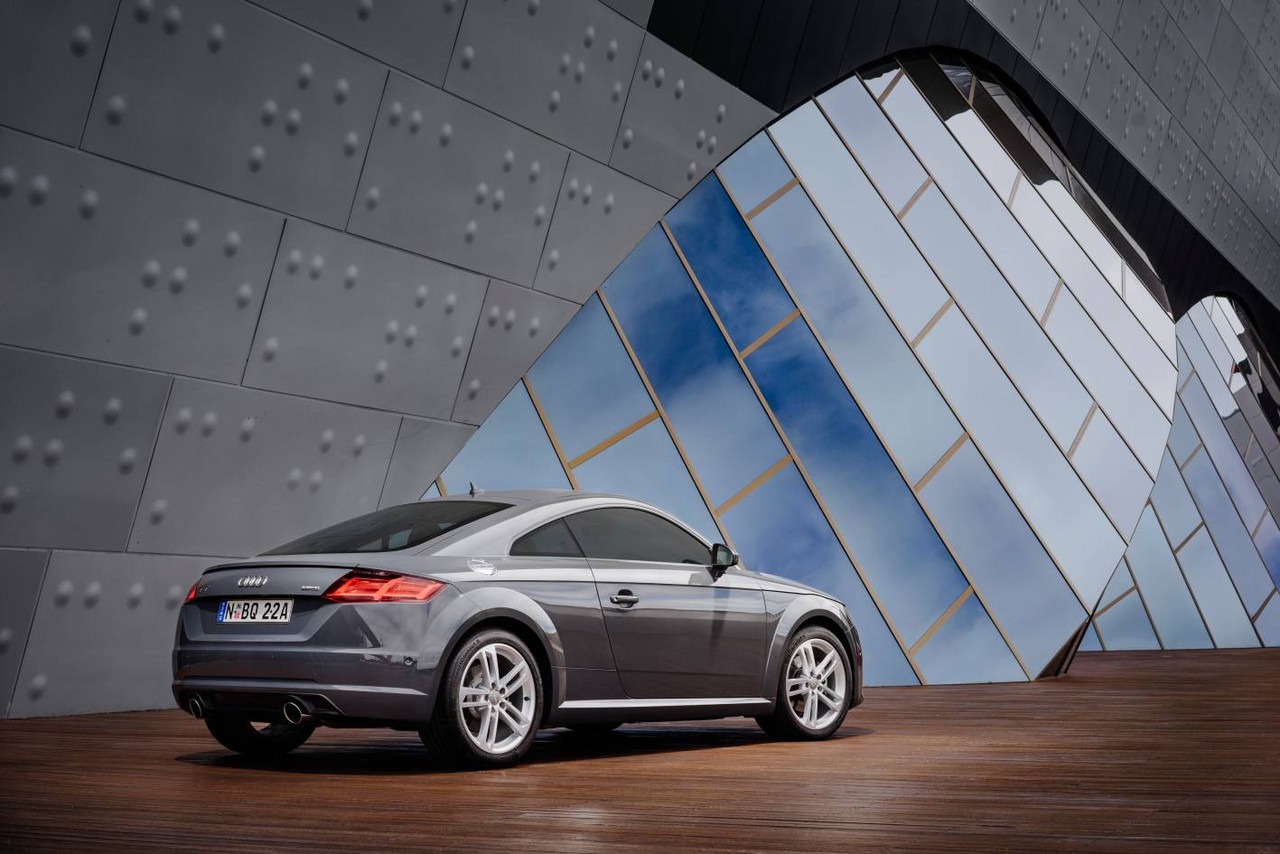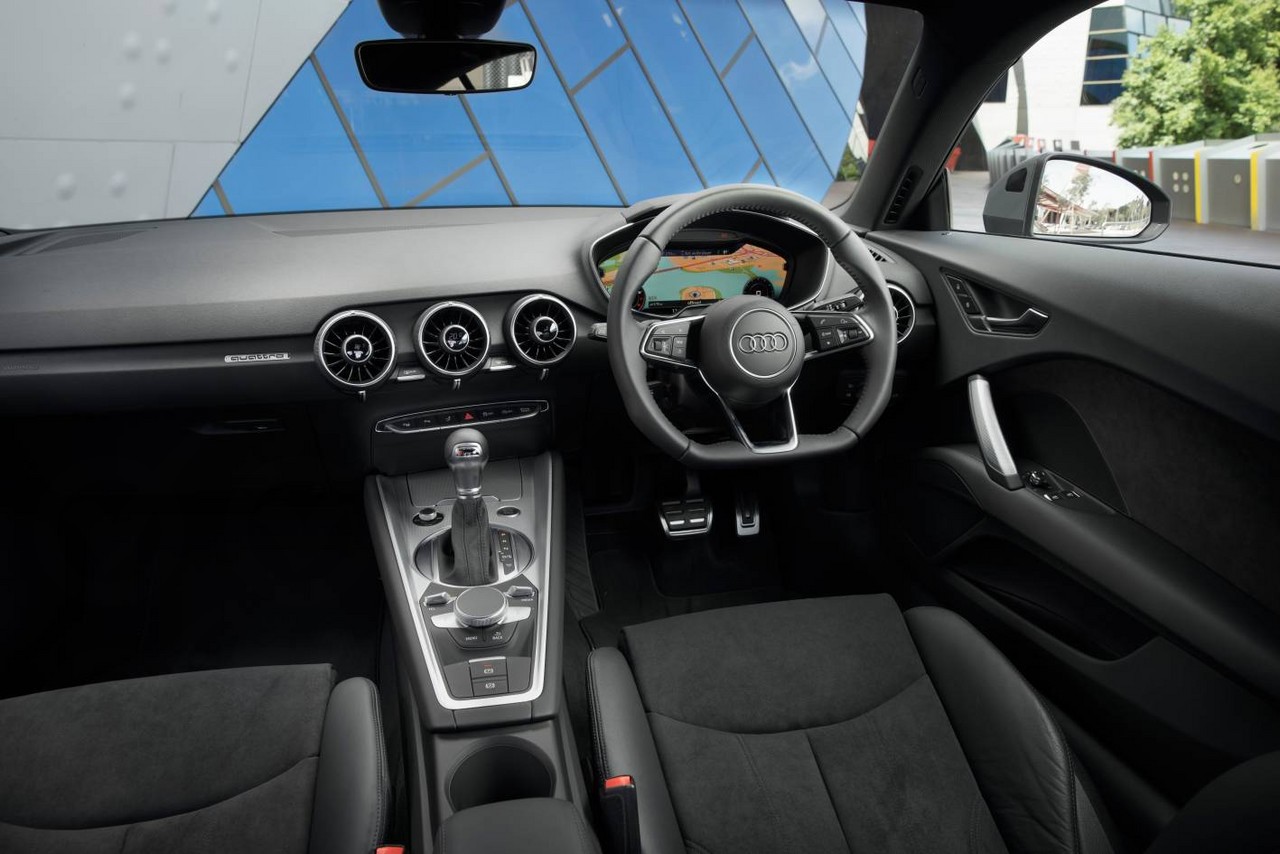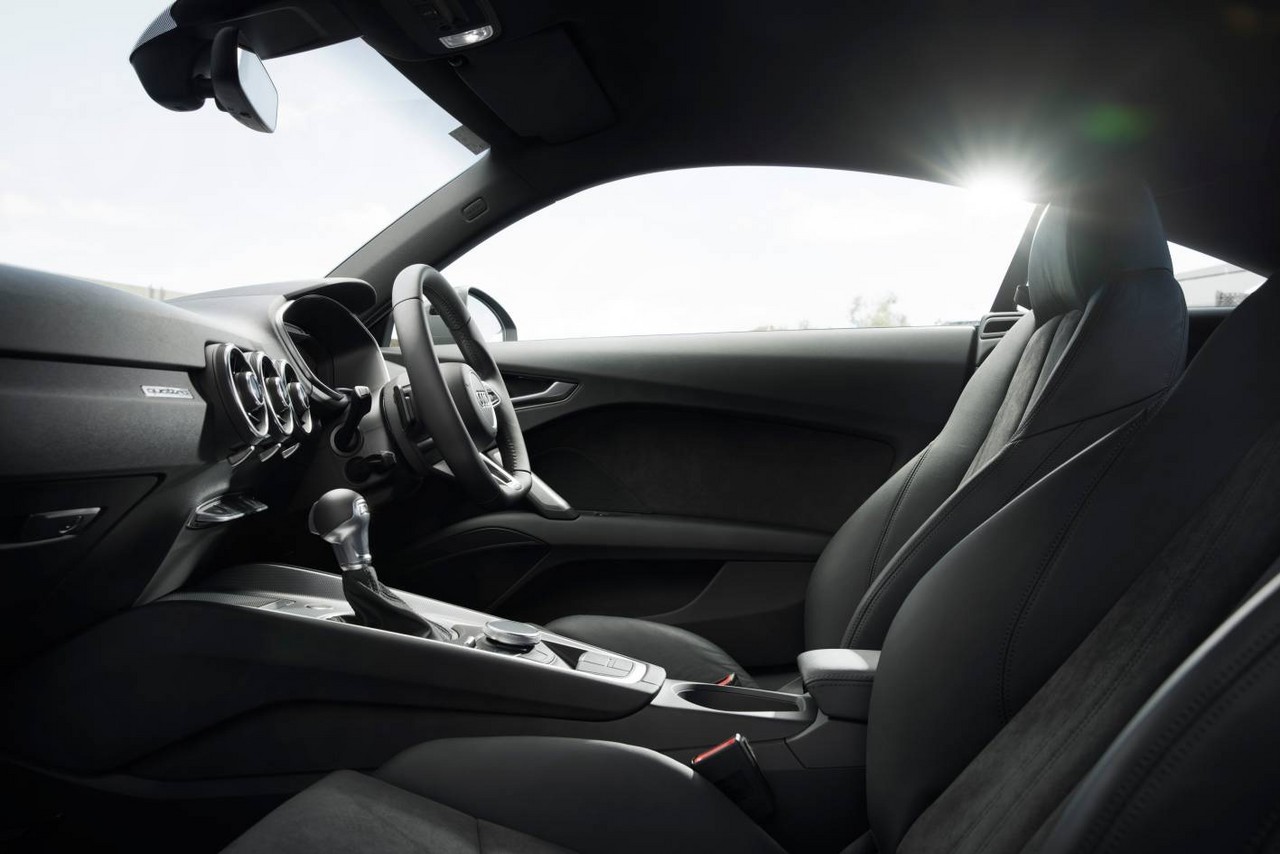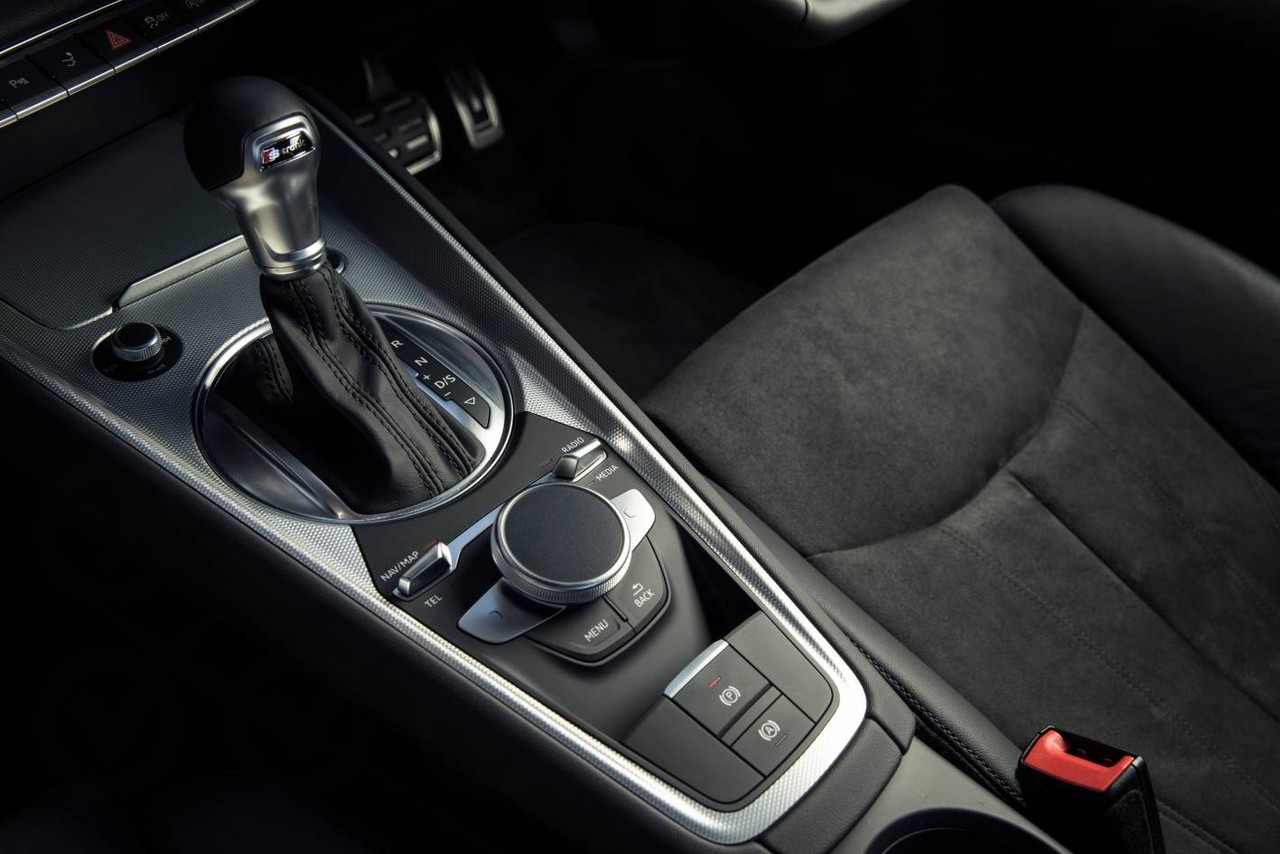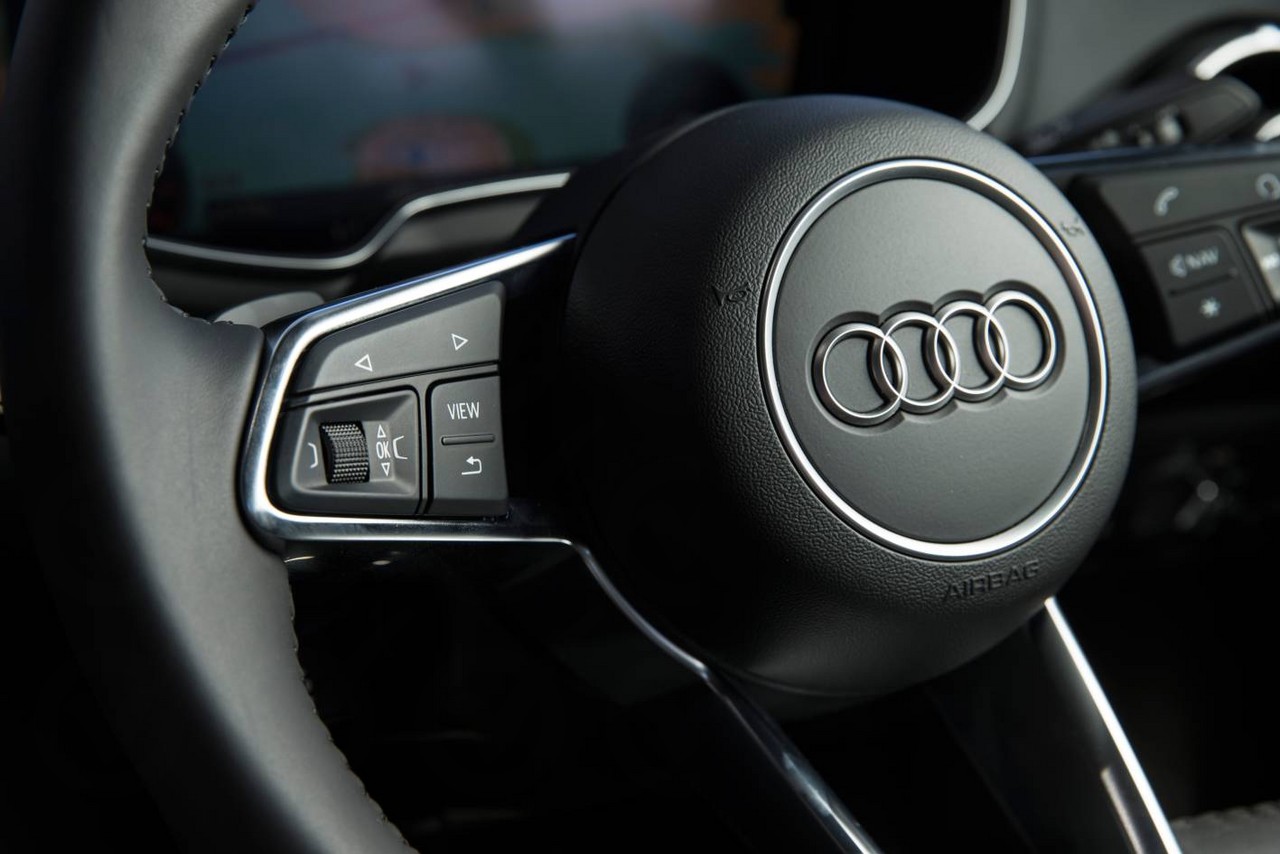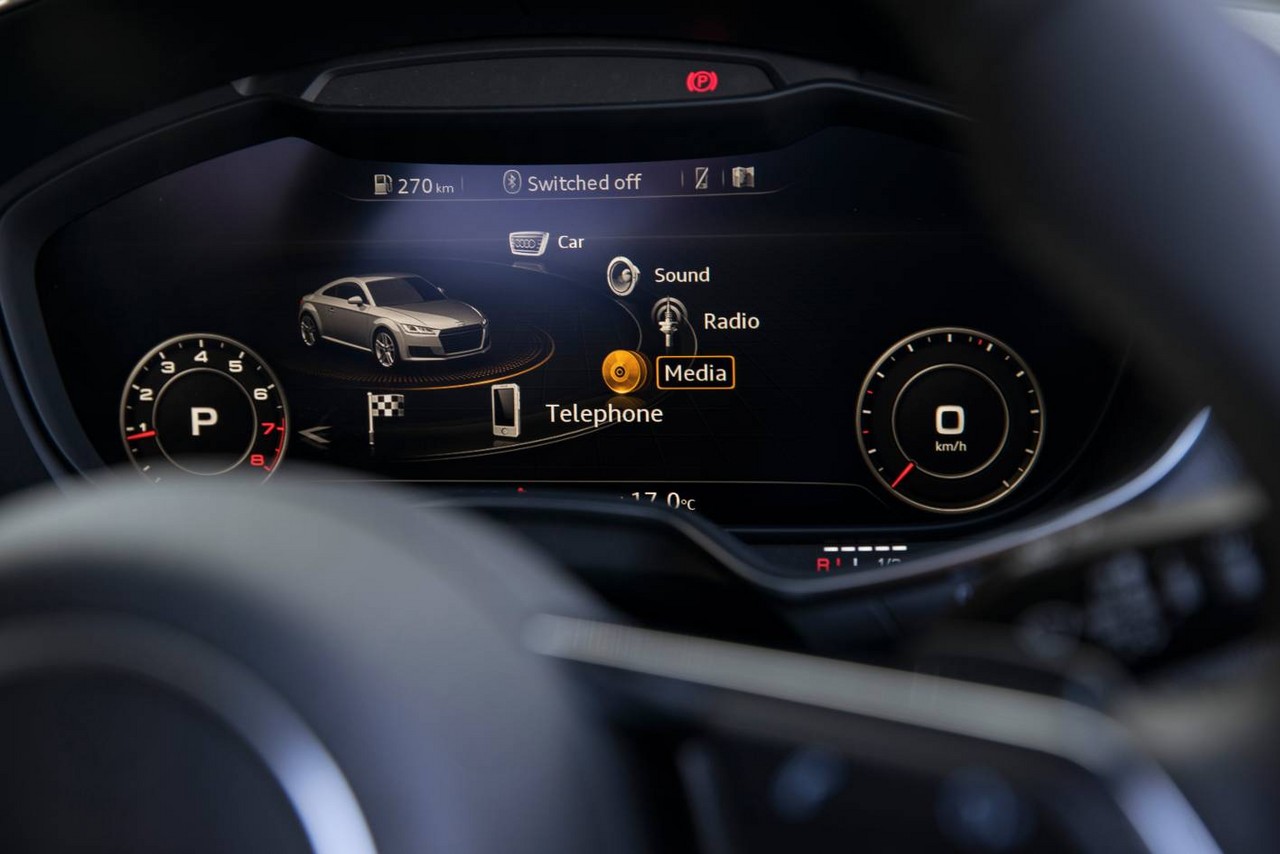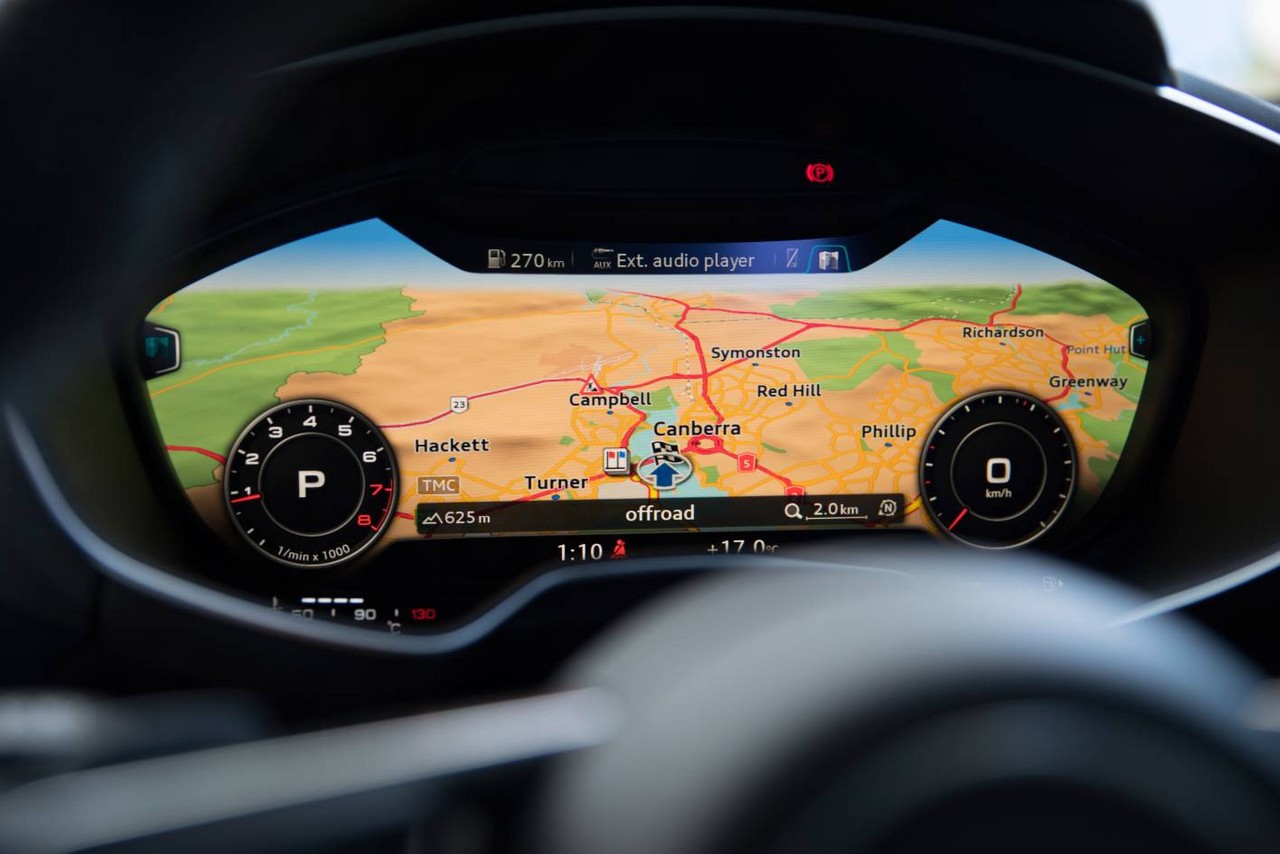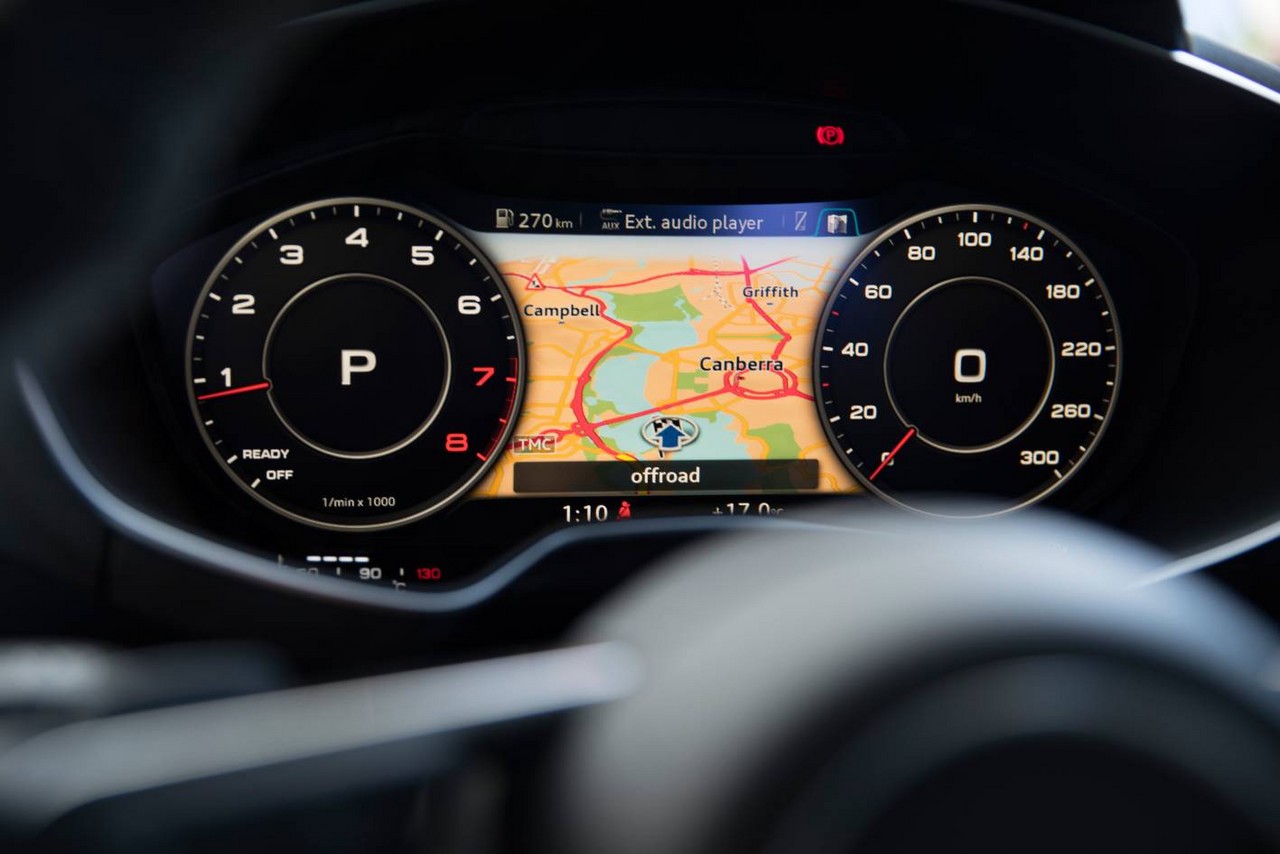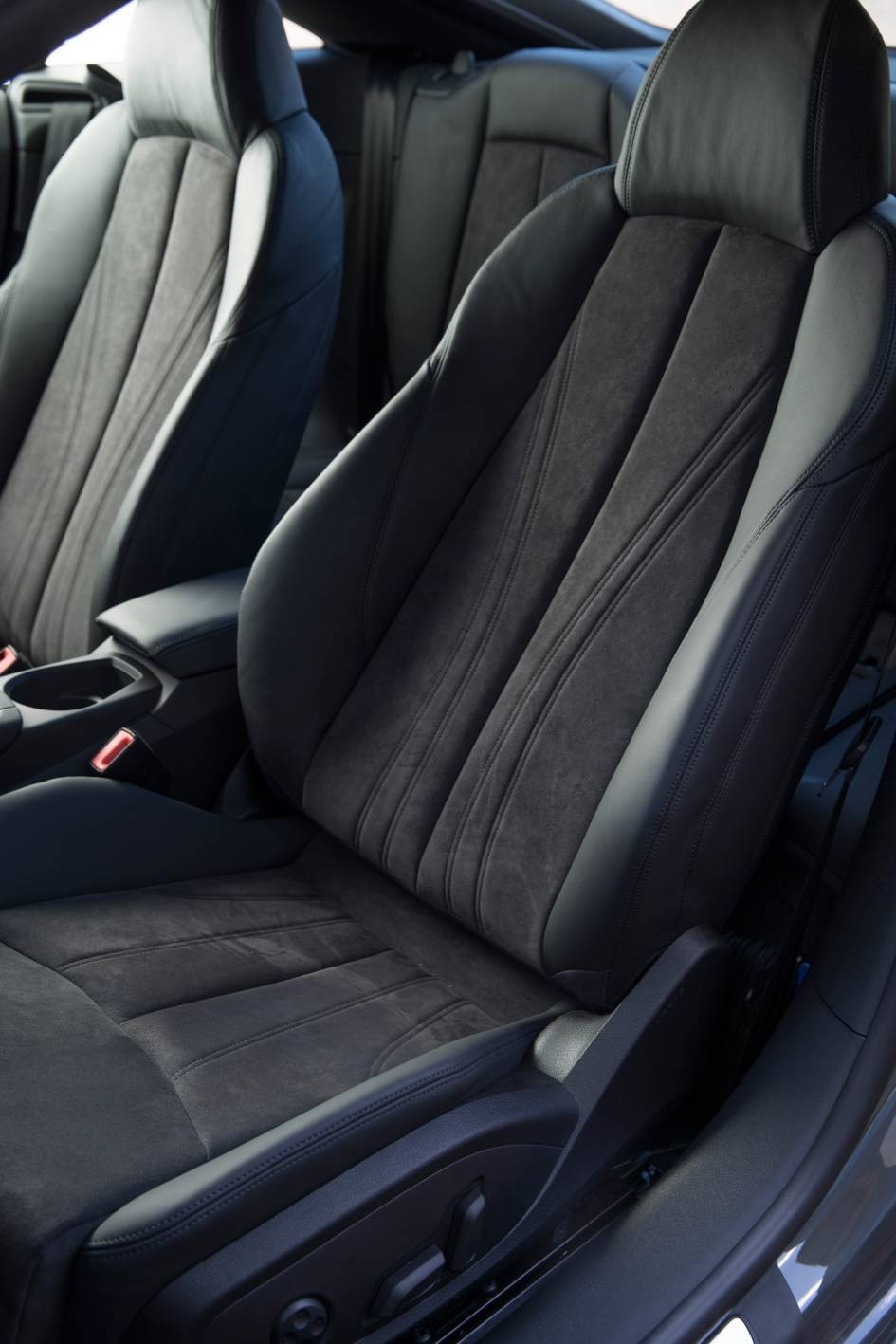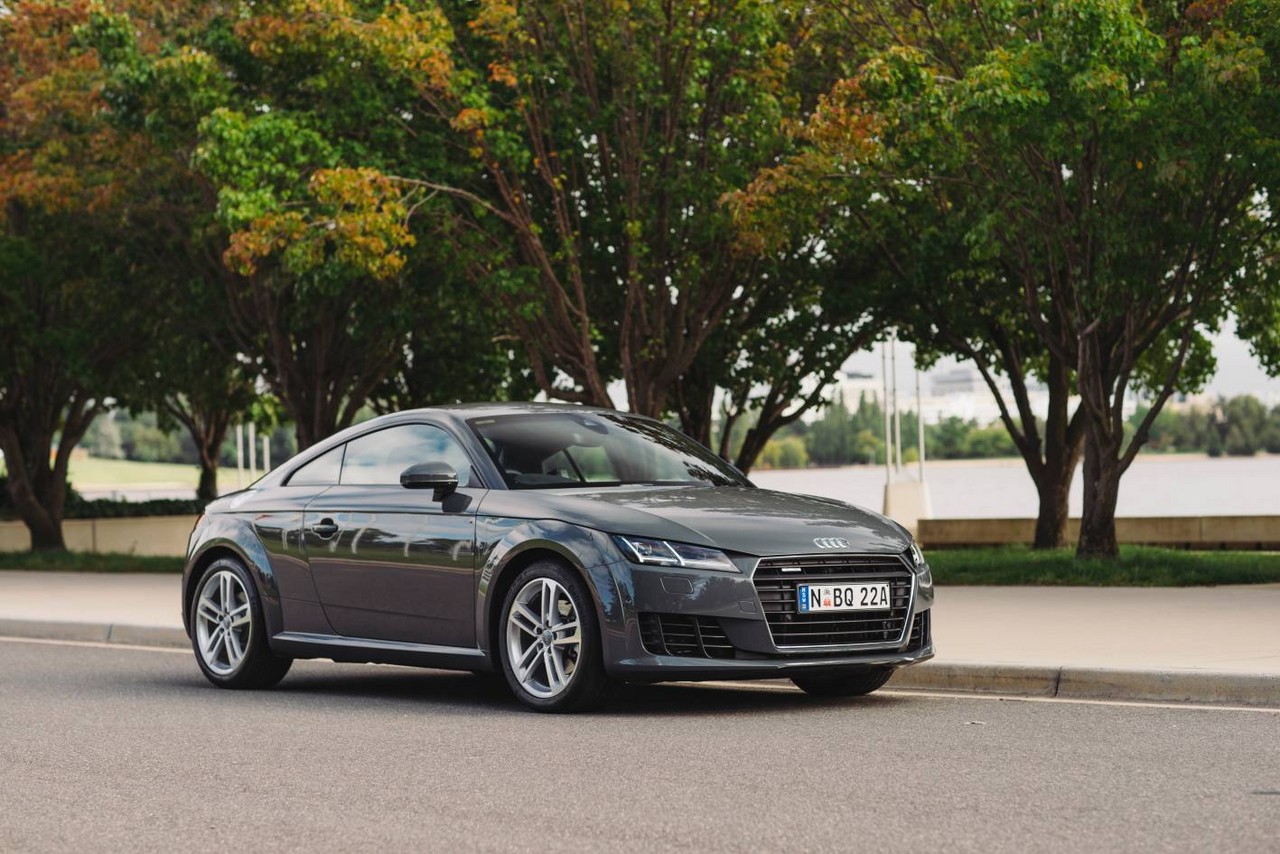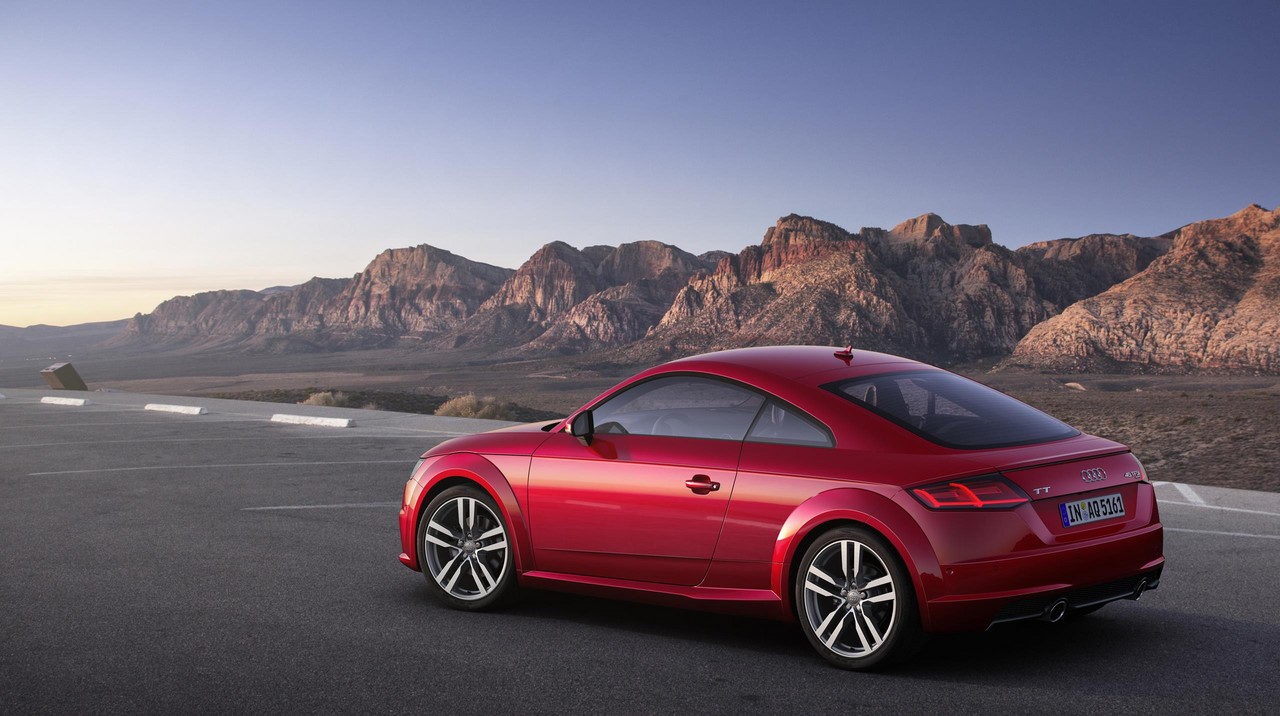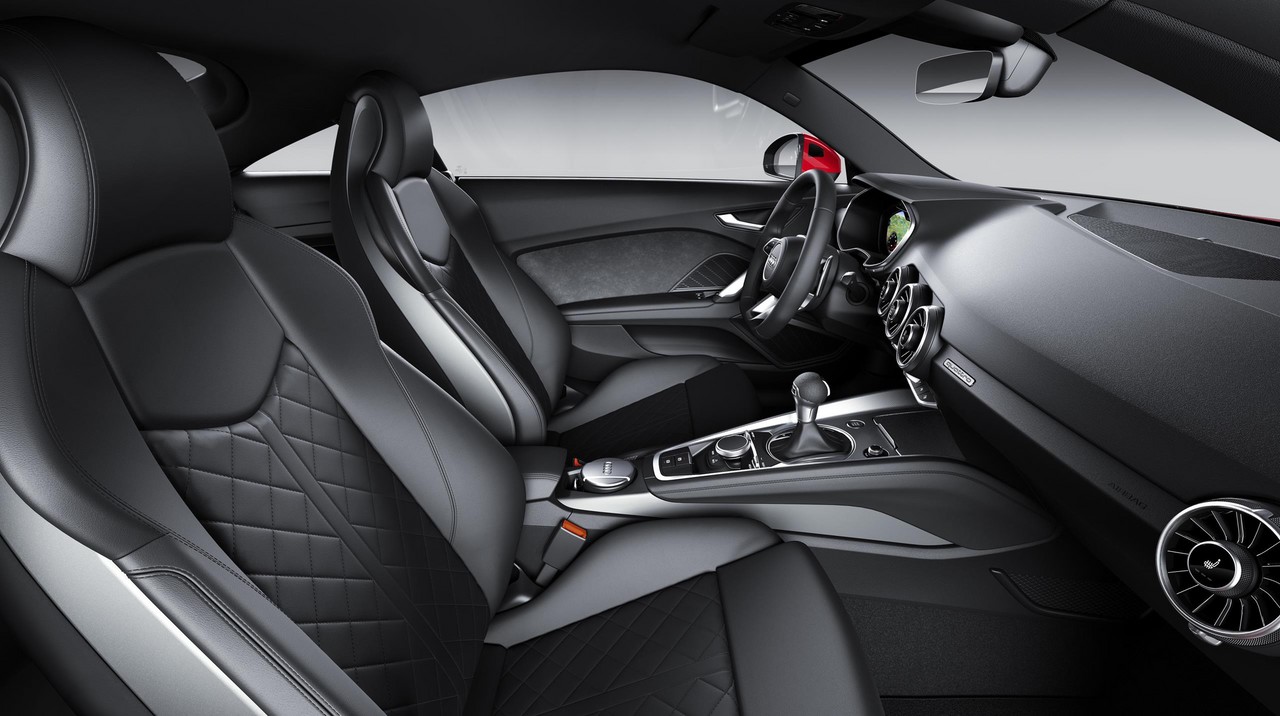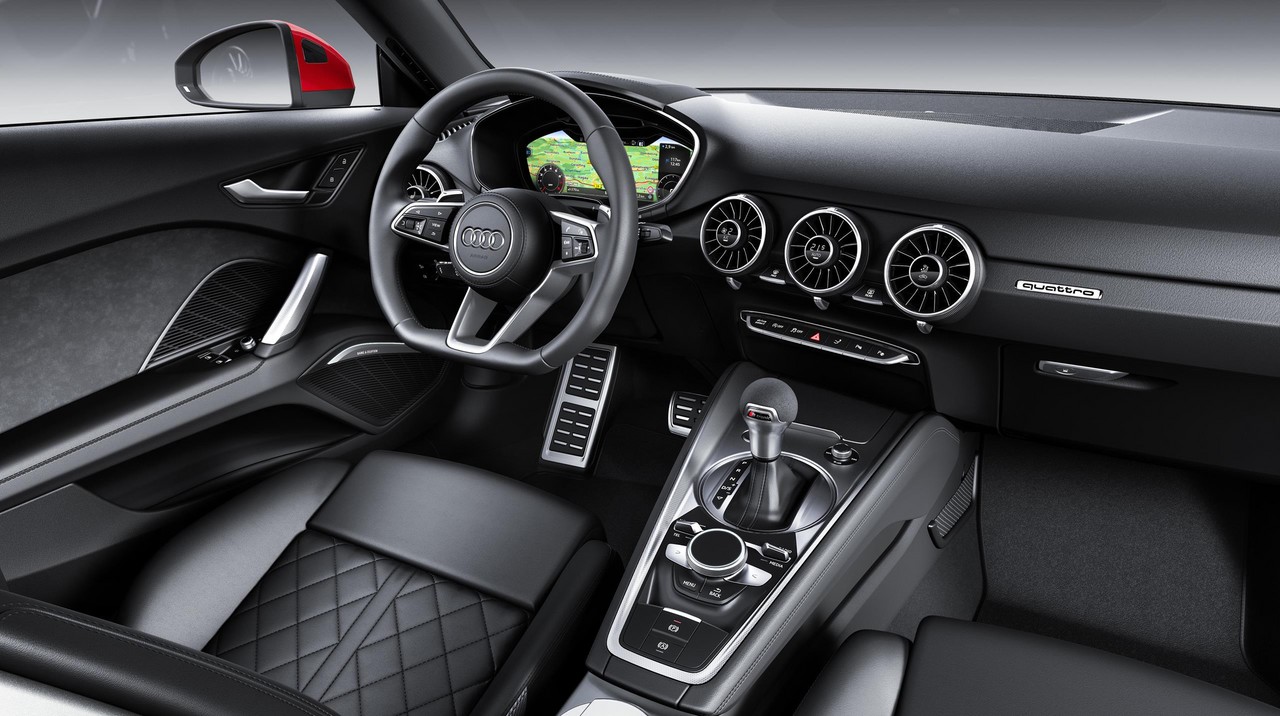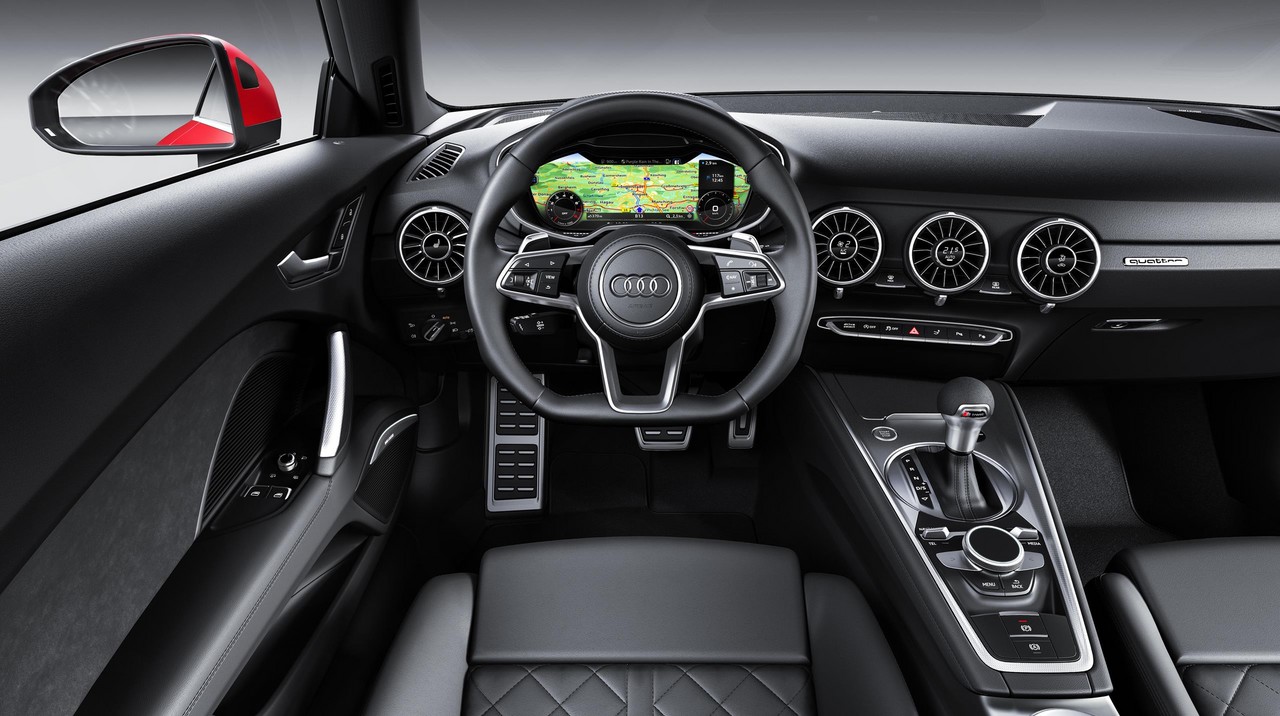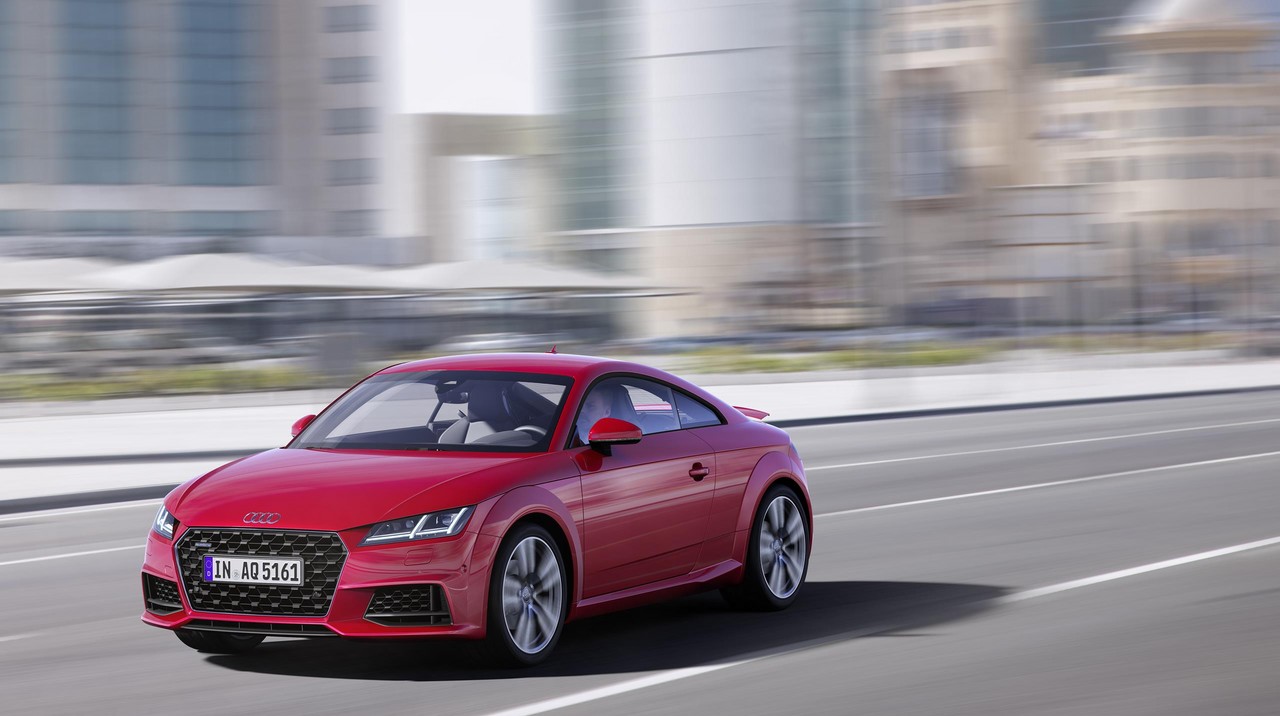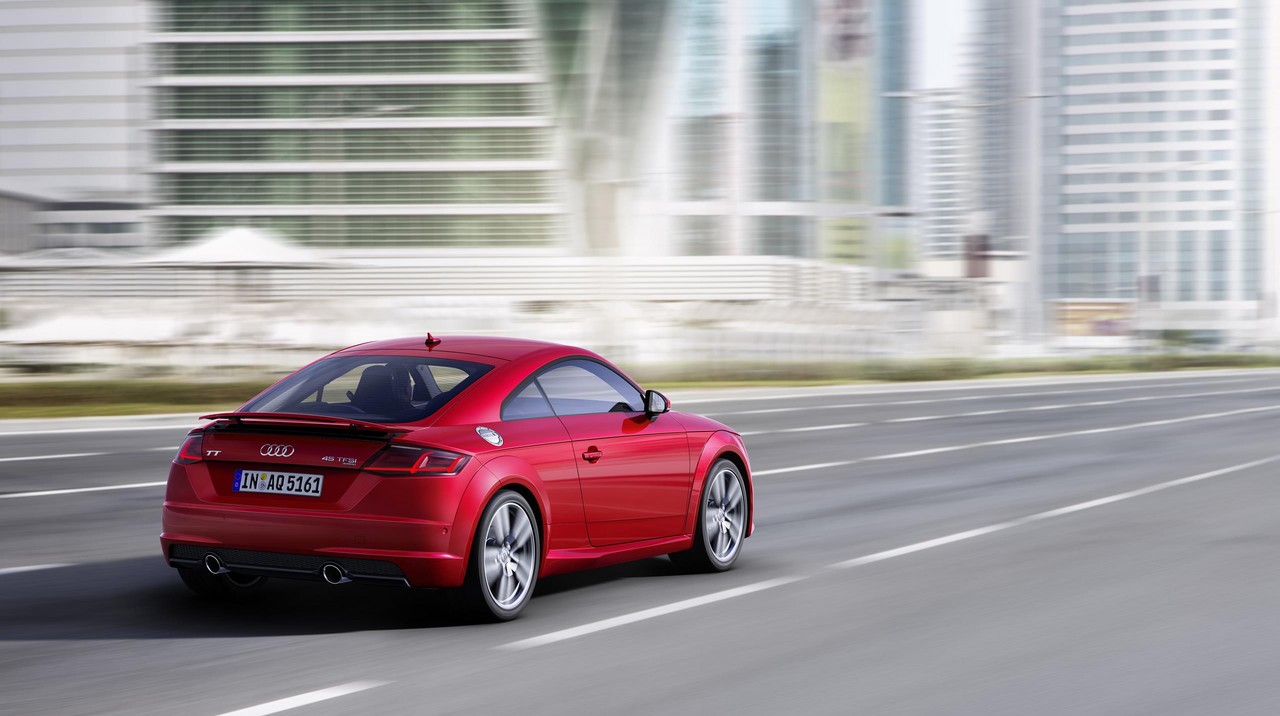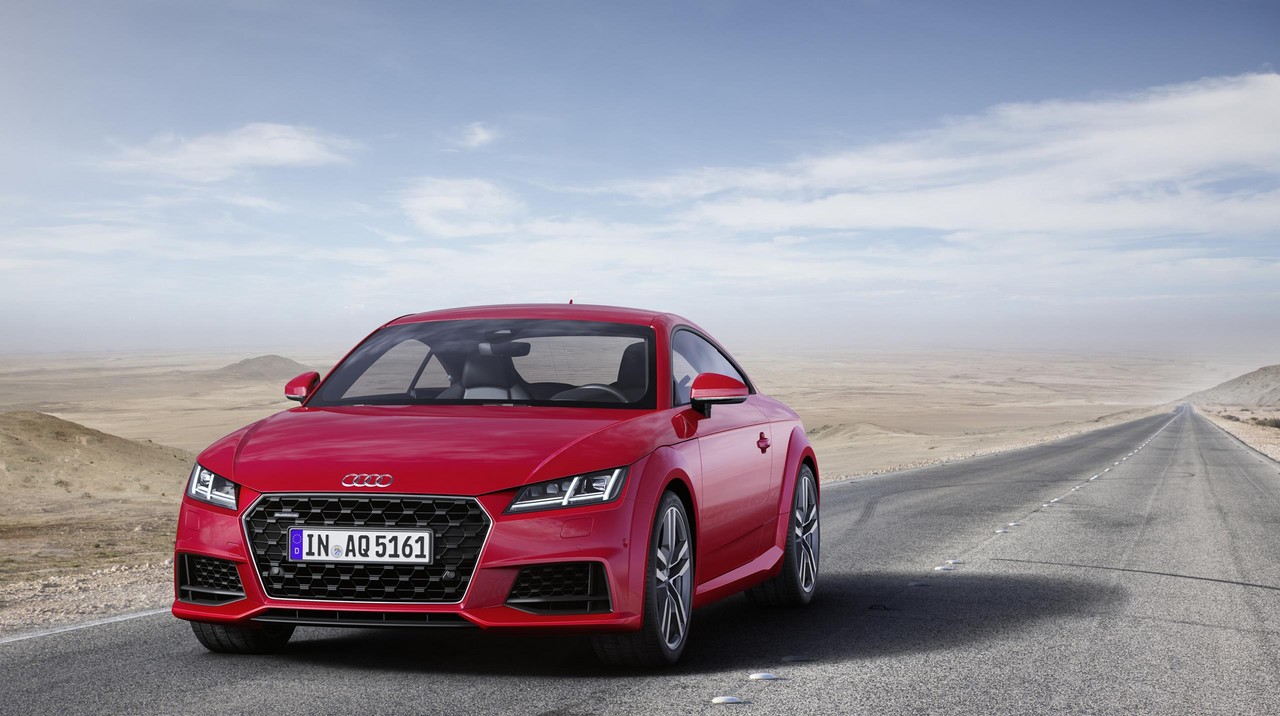
- Responsive 2.0-litre turbocharged petrol engines
- High standard of interior fit and finish
- Satisfying dynamics
- Six-speed manual transmission has precise action
- Susceptible to torque steer
- Steering lacks feel
- Coarse-chip road noise
- Cramped rear seat
Review: Audi 8S.I TT Coupe (2015-18)
Overview
Released in Australia in February 2015, the Audi 8S TT Coupe was powered by a 2.0-litre turbocharged engine. Manufactured in Gyor, Hungary, the TT Coupe was available in front- and all-wheel drive models and with either a six-speed manual or double clutch transmission (DCT or Audi’s ‘S-Tronic’).
2.0 TFSI EA888 engine
The 1984 cc EA888 four-cylinder petrol engine had a grey cast iron block with an 82.5 mm bore and a 92.8 mm stroke, a die-forged steel crankshaft with five main bearings, a cast aluminium alloy cylinder head, direct injection and port injection (the latter for part load operation), a turbocharger which provided peak boost pressure of 0.8 bar, an intercooler, double overhead camshafts (toothed chain-driven), variable intake and exhaust camshaft timing, variable exhaust valve lift, roller finger cam followers with hydraulic valve clearance compensation, four valves per cylinder, a variable intake manifold and a compression ratio of 9.6:1.
To minimise fuel consumption, the 2.0 TFSI engine had a ‘Start/Stop’ function which enabled the engine to shut down when the vehicle was stationary in traffic. Furthermore, the Audi TT required 95 RON premium unleaded petrol (PULP) and complied with Euro 6 emissions standards.
| Variant | Edition | Engine | Trans. | Peak power | Peak torque |
|---|---|---|---|---|---|
| 2.0 TFSI | Sport, S line |
2.0-litre CHHC turbo petrol I4 | 6sp man., 6sp DCT |
169 kW at 4500-6200 rpm | 370 Nm at 1600-4300 rpm |
| 2.0 TFSI quattro | Sport, S line |
2.0-litre CHHC turbo petrol I4 | 6sp man., 6sp DCT |
169 kW at 4500-6200 rpm | 370 Nm at 1600-4300 rpm |
S-Tronic transmission
The S-Tronic transmission unit had two wet clutches, two input shafts and two outputs shafts. In this arrangement, Clutch 1 (C1) operated the odd gears (plus reverse), while Clutch 2 (C2) operated the even gears. When driving, the next-higher gear ratio could be engaged without actually being activated. To change gears, the clutch for the current gear would open and the other clutch (for the higher gear) would engage under electrohydraulic control. In addition to its fully automatic gearshifts, the driver could engage a manual shift mode and shift gears via the steering wheel paddles.
For the 8S TT Coupe, the S-Tronic transmission included a Launch Control function.
Haldex 5 all-wheel drive (‘quattro’)
The Audi 8S TT had a fifth-generation Haldex all-wheel drive system which utilised an electronically controlled and hydraulically actuated multi-plate clutch that was located in front of the rear axle differential (at the end of the prop shaft). If there was a loss of front-wheel traction, or such a loss was anticipated by on-board sensors, the clutch would engage to transfer torque to the rear axle ‘in just a few milliseconds’ for a 50:50 front:rear torque split.
As a result of new software which determined the parameters for engagement of the multi-plate clutch, the all-wheel drive system also had three selectable modes:
- Efficiency: for maximum fuel efficiency, the rear axle could be decoupled such that the vehicle was front-wheel drive only. Nonetheless, all-wheel drive would still be activated before torque was required at all four wheels if a loss of traction was anticipated;
- Auto: the quattro system provided a 90:10 front:rear torque split; and,
- Dynamic: the multi-plate clutch would engage earlier and to a higher degree.
Dimensions and body
Compared to the Audi 8J TT Coupe , the 8S TT Coupe was 21 mm shorter (at 4177 mm), but the same width (1832 mm) and height (1353 mm), while the wheelbase is extended by 37 mm (to 2505 mm); for S line variants, the drag coefficient was 0.29 Cd. Cargo capacity for the TT Coupe was 305 litres, though this increased to 712 litres when the rear seats were folded forward.
Like its predecessor, the 8S TT Coupe had an Audi Space Frame (ASF) body which made extensive use of aluminium (including the side sills, roof frame, bonnet, doors and bootlid). For comparable variants, the 8S TT Coupe was approximately 50 kg lighter; the front-wheel drive 2.0 TFSI variant, for example, had a kerb mass of 1230 kg.
Suspension
The Audi 8S TT Coupe had MacPherson strut front suspension with lower wishbones, aluminium pivot bearings and an anti-roll bar. The independent, four-link rear suspension had a separate spring/shock absorber arrangement and a tubular anti-roll bar.
As an extra-cost option, the 8S TT Coupe was available with Audi’s third generation adaptive damper control system, Audi magnetic ride. With Audi magnetic ride, the dampers were filled with magnetorheological fluid and damper resistance could be varied by the application of a magnetic field to the fluid. Furthermore, Audi magnetic ride enabled the driver to select from comfort, auto or dynamic settings.
Steering
The Audi TT Coupe had electromechanical, rack-and-pinion steering with a progressive steering ratio whereby the amount of steering wheel rotation required to turn the wheels decreased as steering lock increased.
Safety equipment
Standard safety equipment for the Audi 8S TT Coupe included dual front airbags, front seat-mounted side airbags, curtain airbags, ABS, electronic brake force distribution, brake assist, electronic stability control, traction control and front seatbelts with load limiters and pretensioners.
As standard, the TT Coupe was also fitted with ‘Attention Assist’ which monitored driver behaviour for signs of inattentiveness and would provide a warning tone and visual signal if detected.
Euro NCAP testing
In Euro NCAP testing , the Audi 8S TT Coupe received a four star safety rating which included an 81 per cent adult occupant protection rating, a 68 per cent child occupant protection rating and a 64 per cent ‘safety assist’ rating. In the frontal offset test, protection of the front occupants’ heads and thighs were rated as good, though chest protection for the passenger and lower leg protection for both occupants was rated as adequate (i.e. a slight risk of serious injury). Maximum points, however, were awarded in the side impact and pole tests.
Features: TT Coupe Sport
Standard features for the Audi TT Coupe Sport included 18-inch alloy wheels with 245/40 R18 tyres, a 100 watt sound system with eight speakers and a CD/DVD player, Audi’s MMI navigation plus system with voice control and live traffic updates, Bluetooth mobile phone connectivity and audio streaming, two SD card readers, climate control air conditioning, power adjustable sport front seats, Alcantara seat panels, cruise control, xenon headlights with LED daytime driving lights, automatic headlights, rain-sensing wipers, Audi parking system plus (front and rear parking sensors with reversing camera), a leather-wrapped steering wheel, split and folding rear seats, remote central locking with proximity key, power windows, power adjustable and heated door mirrors, tilt and telescopic steering wheel adjustment, push-button start, an auto-dimming rear view mirror, tyre pressure monitoring, a 12 volt power socket (luggage compartment), trip computer and an immobiliser.
Inside, the MMI (Multi-Media Interface) controls were combined with the instrument cluster in a 12.3-inch display (Audi’s ‘virtual cockpit’). For models with the S-Tronic transmission, steering wheel gearshift paddles were also fitted as standard.
Features: TT Coupe S line
The TT Coupe S line was further equipped with 19-inch five-arm-star contrasting grey alloy wheels, 155 watt Audi sound system with a five-channel amplifier and nine speakers (including two bass boxes), DAB+ digital radio, ‘S’ sport front seats with pneumatic bolster adjustment, LED headlights and LED tail-lights.
Visually, the S line could be identified by its body styling package which included unique front and rear bumpers, side sills, platinum grey rear diffuser, ‘S line’ logos (for the front wings, door sills, steering wheel and seats), matt brushed aluminium inlays, S line steering wheel with perforated leather grips, perforated leather gearshift knob and contrasting interior stitching.
Specifications
- Specifications: Audi 8S TT Coupe (February 2015)
- Specifications: Audi 8S TT Coupe and TT Roadster (December 2016)
- Specifications: Audi 8S TT Coupe and TT Roadster (March 2018)
Related links
- Technical Data: Audi 8S TT Coupe TFSI (February 2015)
- Technical Data: Audi 8S TT Coupe TFSI S-Tronic (February 2015)
- Technical Data: Audi 8S TT Coupe TFSI quattro (February 2015)
- Press Kit: Audi 8S TT Coupe (February 2015)
Review: Audi 8S.II TT Coupe (2018-on)
Overview
Commencing production in September 2018, the Audi 8S Series II (8S.II) TT Coupe was released in Australia in September 2019. For Australia, the Audi 8S.II TT Coupe range consisted solely of 45 TFSI quattro variants.
Visually, the Audi 8S.II TT Coupe could be identified by its ‘more masculine, more progressive and even sportier’ appearance, with changes for the three-dimensional single-frame radiator grille, large side air inlets and horizontal rear lines. Furthermore, the fuel tank flap no long had a cap underneath such that the driver could insert the petrol pump nozzle directly into the opening.
The new optional ‘S line’ exterior package consisted of full-length front splitter, vertical air inlets, a titanium black radiator grille, unique side sills with inserts, a wider rear diffuser and vertical air inlets (that had three horizontal fins) below the tail-lights.
| Variant | Engine | Trans. | Peak power | Peak torque |
|---|---|---|---|---|
| 45 TFSI quattro | 1984 cc turbo petrol I4 | 6sp man., 7sp DCT |
169 kW at 4500-6200 rpm | 370 Nm at 1600-4300 rpm |
Safety equipment
For the Audi 8S.II TT Coupe, standard safety equipment was extended to include –
- Audi side assist: operating at speeds above 15 km/h, Audi side assist used the two rear radar sensors to monitor traffic up to 70 metres behind the Audi TT Coupe. If another vehicle approached quickly or was in the driver’s blind spot, a warning LED in the housing of the appropriate door mirror would illuminate. If the driver activated the indicator to change lanes, the LED would blink rapidly to warn the driver; and,
- Audi active lane assist: operating at speeds of 65 km/h and above, Audi active lane assist used the front camera to recognise lane markings. As the vehicle approached a lane marking without the turn signal having been activated, the system provided a slight steering intervention to direct the vehicle back into its lane. Through the MMI system, the driver could select whether this intervention occurred at an early stage (in which case the vehicle was steered to the centre of its lane) or only shortly before crossing the line. The steering wheel could also vibrate as a warning signal if selected.
Features
For the Audi 8S.II TT Coupe, standard features were extended to include LED headlights, automatically folding door mirrors and wireless mobile phone charging.
Related links
